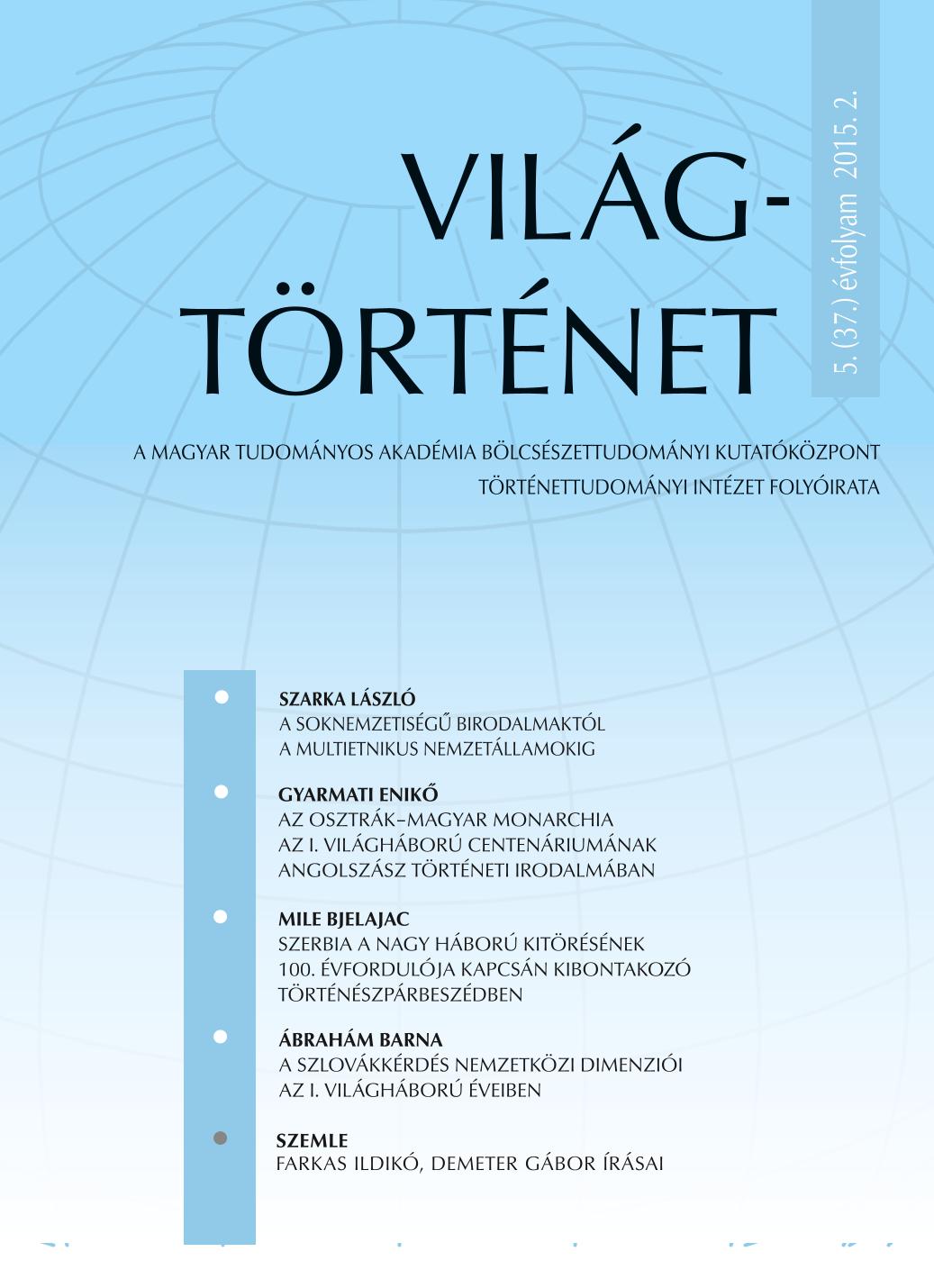A szlovákkérdés nemzetközi dimenziói az I. világháború éveiben. Historiográfiai áttekintés
The International Dimension of the Slovak Question during the First World War
Author(s): Barna ÁbrahámSubject(s): Pre-WW I & WW I (1900 -1919), Interwar Period (1920 - 1939)
Published by: Magyar Tudományos Akadémia Bölcsészettudományi Kutatóközpont Történettudományi Intézet
Keywords: First World War; Czechoslovakia; Tiso-led republic; concept of nation
Summary/Abstract: The study has the intention to give an overview on plans and possible ways of resolving Slovak question during the First World War as reflected in recent publications. It points at the fact that Slovak historiography has been able to research the problem only since 1990 with objectivity: both the first and the second Czechoslovakia forced the teleological idea of centuries-long struggle for creating a common state, while Slovak autonomist movement in the interwar period, in the years of the Tiso-led republic and in exile after 1945 maintained the evenly tendentious thesis of continuous oppression by Czechs. After presenting some former authors of these unilateral interpretations the article recapitulates the main conceptions in the years of the Great War. At first as the traditional Slovak identity it speaks about loyalty to Hungary (uhrofil orientation), respectively to a would-be reformed, federative Great Austria. Leading Slovak historians admit that these orientations would have had real chances in case Budapest and Vienna had laid its policy on new bases. As a further traditional direction follows the russophile strategy with its deep historical roots and actual weight among emigrants living in Tzarist Russia, underlining that it was considerable alternative of solution, too. After the peripheral Polish relation at the end the victorious way, the Czecho-Slovak unity is treated with its equally long prehistory and recent realization in the United States and in Russia, both among politicians and soldiers of the voluntary Czechoslovak Army in Russia, Italy and France. Recent authors recognize that Czech connection was the strongest and in the autumn of 1918 the only real way remained, but at the same time they point at different Czech and Slovak concept of nation, of future arrangement of the planned common state, at frequent misunderstandings and suspiciousness, looking for ulterior motives and at obscure circumstances of the proclamation of Czecho-Slovakia.
Journal: Világtörténet
- Issue Year: 2015
- Issue No: 2
- Page Range: 257-288
- Page Count: 32
- Language: Hungarian

